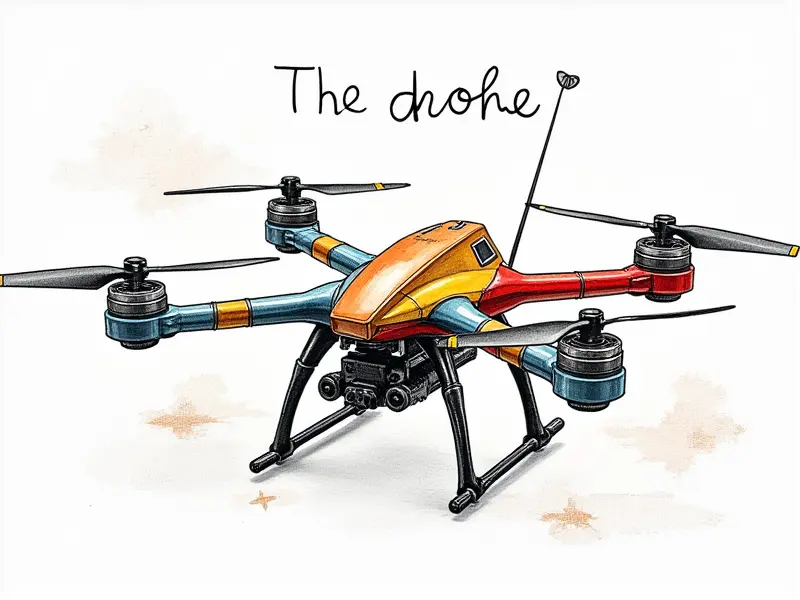Are drones able to fly indoors?

Can Drones Fly Indoors Safely?
Flying drones indoors is an intriguing concept that has gained traction in recent years. With advancements in technology, many types of drones are now capable of navigating small spaces with relative ease. However, the safety and feasibility of indoor drone flights depend on several factors, such as the type of drone, flight conditions, and user expertise.
Navigating Indoors with RC Quadcopters
Remote-controlled (RC) quadcopters are among the most popular choices for indoor flying due to their maneuverability. These drones feature four rotors that provide balanced lift and stability, making them ideal for confined spaces.
Benefits of Using Quadcopters Indoors
- Maneuverability: Quadcopters can hover in place and navigate tight corners with ease.
- Safety: They are less likely to cause damage than larger, fixed-wing drones due to their smaller size and lower speed.
- Portability: Small quadcopters fit easily into backpacks or pockets for convenient transport.
FPV Racing Drones for Indoor Use
First-person view (FPV) racing drones have become increasingly popular among hobbyists looking to push the limits of indoor flight. These high-speed machines are designed for rapid movement and can reach impressive speeds, making them thrilling to operate.
Challenges with FPV Drones Indoors
- Obstacle Avoidance: High-speed flights increase the risk of collisions with walls or objects.
- Battery Life: Short flight times due to high power consumption limit indoor operation.
- Control Precision: Maintaining precise control at high speeds can be challenging for novice pilots.
Helicopters vs. Quadcopters: Indoor Flight Capabilities
When it comes to indoor flight, both helicopters and quadcopters have their advantages and drawbacks.
Advantages of Helicopters Indoors
- Versatility: Helicopters can hover in place and move vertically, making them ideal for inspecting high spaces or tight corners.
- Simplicity: Single-rotor designs are easier to maintain compared to quadcopters with multiple motors.
Disadvantages of Helicopters Indoors
- Vibration and Noise: The single rotor can generate significant vibration and noise, affecting performance indoors.
- Trouble Balancing: Maintaining stability in confined spaces is more challenging due to the complex aerodynamics involved.
Airplanes or Coaxials: Best for Indoor Flying?
Airplanes and coaxial helicopters are less common for indoor use, but they do have specific applications. Airplanes offer high-speed performance but require open spaces to take off and land effectively. Coaxial helicopters provide stability similar to quadcopters but with a more complex design.
Coaxials as an Alternative
- Stability: The dual rotors offer better balance and lift, reducing the risk of tilting or rolling.
- Maintenance: Dual-rotor systems can be more intricate to maintain compared to single-rotor helicopters.
Tips for Flying Drones Indoors Safely
Flying drones indoors requires a careful approach to ensure safety and successful operation. Here are some tips to keep in mind:
- Choose the Right Drone: Opt for lightweight, compact models designed specifically for indoor use.
- Clear the Area: Remove any obstacles that could interfere with flight paths or cause damage.
- Practice Flight Control: Master basic controls before attempting more advanced maneuvers indoors.
Drones in Small Spaces: The Inside Story
Flying drones in small spaces presents unique challenges, such as limited maneuvering room and increased risk of collisions. However, the benefits include versatility for inspection tasks or entertainment purposes.
Applications in Small Spaces
- Inspection: Drones can be used to inspect hard-to-reach areas like attics or crawl spaces.
- Entertainment: Indoor drone racing and freestyle flying offer thrilling experiences for hobbyists.
Challenges of Flying Drones Inside
The indoor environment poses several challenges that must be addressed to ensure successful flights. Understanding these obstacles is crucial for safe operation.
Main Challenges
- Lighting Conditions: Poor lighting can impair visibility and navigation.
- Airflow: Drafts or air conditioning vents can affect flight stability.
- Spatial Constraints: Limited space restricts maneuverability and increases the risk of crashes.
Indoor Drone Flight: Challenges & Solutions
To overcome the challenges associated with indoor drone flights, it's essential to implement effective solutions. Here are some strategies to enhance your indoor flying experience:
- Use Obstacle Avoidance Systems: Equip drones with sensors or cameras that detect and avoid obstacles.
- Improve Lighting: Utilize additional lighting sources, such as lamps or flashlights, to enhance visibility.
- Optimize Flight Paths: Plan out flight routes in advance to minimize the risk of collisions.
Are Indoor Drones the Future?
The future of indoor drones looks promising, with ongoing advancements in technology and growing interest from hobbyists and professionals alike. As more applications emerge for indoor drone use, we can expect continued innovation in this area.
Potential Applications
- Commercial Use: Indoor drones could revolutionize industries like retail inventory management or construction site monitoring.
- Hobbyist Growth: The popularity of indoor drone racing and freestyle flying is likely to increase, driving further development in this field.
Exploring Indoor Drone Capabilities
The ability to fly drones indoors opens up a world of possibilities for both recreational and professional purposes. By understanding the strengths and limitations of different types of indoor drones, users can make informed decisions about which models best suit their needs.
In conclusion, while flying drones indoors presents unique challenges, it also offers exciting opportunities for exploration and innovation. Whether you're an enthusiast looking to enjoy the thrill of FPV racing or a professional seeking efficient solutions for indoor inspection tasks, there is much to gain from embracing this evolving technology.

